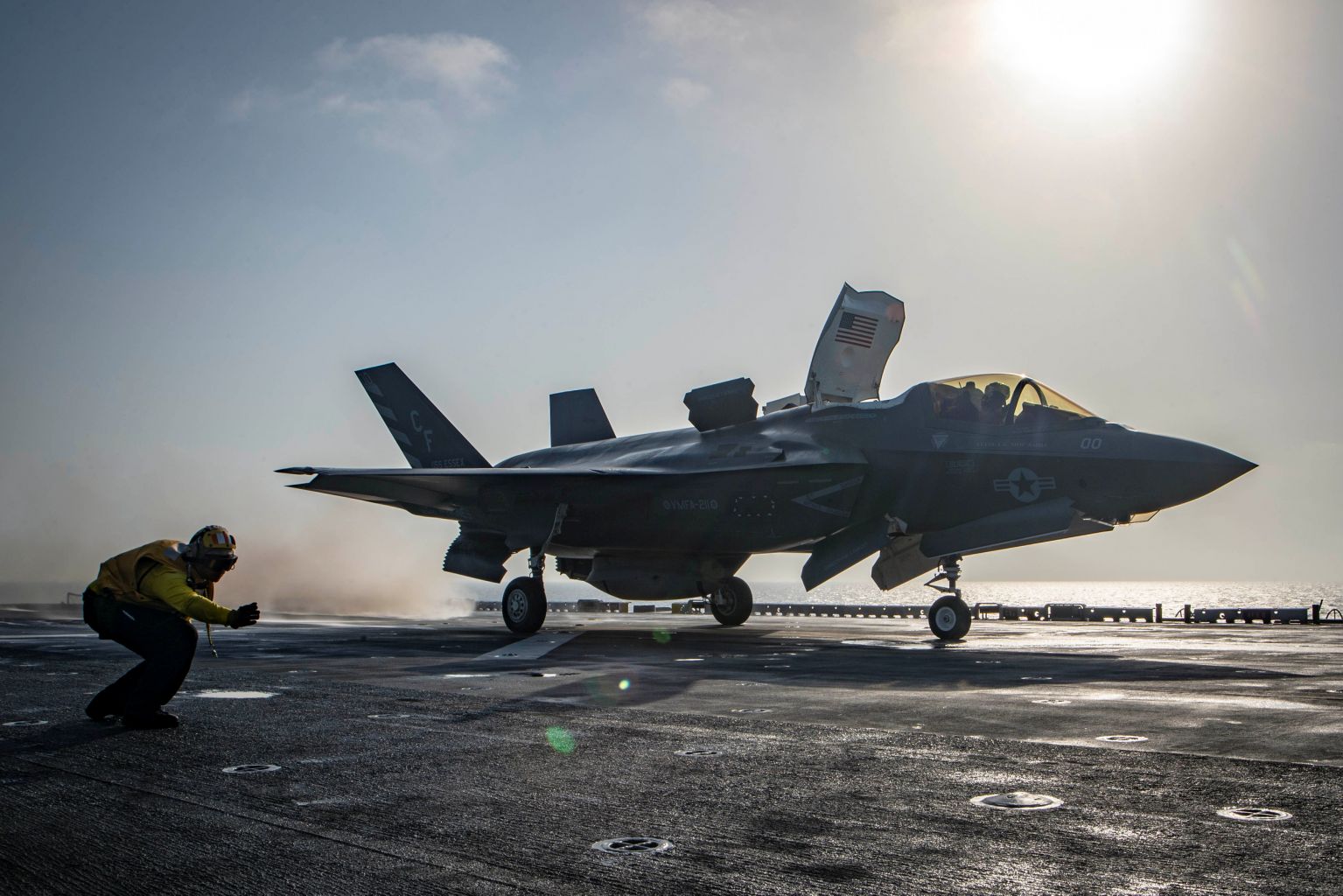US, China and others tentatively agree to multilateral air encounter code
Sign up now: Get ST's newsletters delivered to your inbox

File photo showing an F-35B Lightning II from the US Air Force on an amphibious assault ship, on Sept 27, 2018.
PHOTO: REUTERS
Follow topic:
SINGAPORE (REUTERS) - Several countries, including the United States and China, agreed "in principle" on Saturday (Oct 20) to multilateral guidelines to manage unexpected encounters between their military aircraft, joining 10 South-east Asian nations already in the pact.
The world's two biggest economies as well as Australia, India, Japan, New Zealand, Russia and South Korea tentatively joined the agreement, which was initially adopted on Friday by Asean, according to a joint statement issued after a meeting of defence ministers from the 18 countries in Singapore.
The voluntary, non-binding guidelines build on an existing code to manage sea encounters adopted by all 18 countries last year, which was designed to mitigate risks following a boom in the region's maritime and air traffic in recent years.
"We all know that if there is a physical incident, it changes the name of the game... it creates a cascade of activities that you cannot control," Singapore Defence Minister Ng Eng Hen, the host, said at a press briefing following the meeting.
The air code has been hailed as the first multilateral deal of its kind, although such arrangements exist at bilateral levels. The US and China, for instance, in 2015 signed a pact on a military hotline and rules governing air-to-air encounters.
US Defence Secretary James Mattis told his Chinese counterpart, General Wei Fenghe, on Thursday that their countries needed to deepen high-level ties so as to navigate tension and rein in the risk of inadvertent conflict.
The US military flew B-52 bombers across the South China Sea in September. Earlier this month, a US Navy destroyer sailed near islands China claims, drawing the ire of Beijing.

